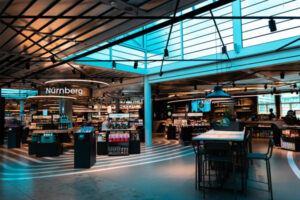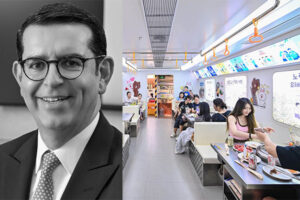For 80% of consumers, accessibility and shop diversity are the most important criteria for the success of a shopping center. Customers are not limited to one center, but visit an average of four different locations per year. For most people, the overall concept is what counts – only 12% visit a specific center because of a particular store. These are the findings of a representative survey of more than a thousand regular center visitors, conducted by Forsa on behalf of JLL Deutschland. Via telephone, the institute interviewed people who frequent a shopping center at least six times per year.
Proximity is a decisive criterion: Of those surveyed, 56% prefer centers that can be reached within 20 minutes, while 80% consider the limit of reasonableness to be 30 minutes. Upon arrival at the center, the stay must be worth it: Only a fraction of those surveyed stay for under 30 minutes, while more than a third stay for up to one hour. The availability of many shops at one location is also a factor. Visitors from smaller towns with fewer than 20,000 inhabitants stay longer on average than people from large cities.
Gastronomy Keeps Visitors Satisfied
The range of fast food offers and cafés is particularly appreciated. Substantial meals and high-quality food are less in demand. In general, visitors are satisfied with the gastronomic offers provided by the centers. If an option is lacking, however, it is usually the opportunity to enjoy a drink with friends over a small snack.
Around half of all those surveyed also identified a shortfall in the availability of regional products, while visitors between 30 and 44 years of age cited a lack of childcare. Younger respondents between the ages of 18 and 29 focused on leisure activities, such as bowling alleys.
Meanwhile, significant gaps have been identified in the digital sector: Two thirds of visitors are unaware of whether or not their center offers an app, for example. If such a thing exists, however, it hardly meets with approval: Only 12% of those who are aware of the existence of an app use it. Moreover, such apps would be much more appealing if they not only displayed store opening hours and maps, but also the goods offered by individual stores and reserved them for pick-up at the center.
Investment Market Suffering from Lengthy Transaction Processes
The investment market for retail real estate is currently experiencing a low for shopping centers in terms of transaction volume. The asset class only generated 470 million euros in the first six months of 2018 – less than ever before. There are a number of reasons behind this: The asset class shopping center is viewed more critically than a year ago, particularly with regard to rent-related developments. Purchases are being examined in a more noticeably thorough manner and are delaying transaction processes. Properties worth approximately 1.5 billion euros are currently being marketed.
In total, there were 13 transactions during the first half of the year, compared to 25 at the same time last year. The number of major transactions in the three-digit million range also fell from three to one. Finally, the average transaction volume fell from 51 to 36 million euros.
However, the prime yield remained at 3.9%, as prime products, in particular, are still in high demand.
Sign up for our ACROSS Newsletter. Subscribe to ACROSS Magazine.






